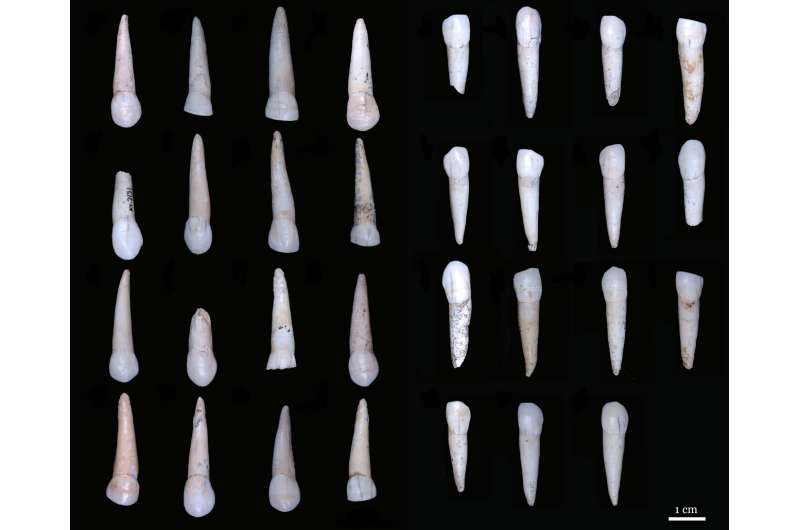Estimating the sex of the youngest individuals from Sima de los Huesos via dentition

thanks to the analysis of 32 dental pieces using micro-computed tomography a team led by Cecilia García Campos, a researcher in the Dental Anthropology Group at the Centro Nacional de Investigación sobre la Evolución Humana, has estimated the sex of at least 15 individuals from the population of Sima de los Huesos site in the Sierra de Atapuerca (Burgos, Spain). The results are published in the Journal of Human Evolution.
The extraordinary fossil collection recovered at this Middle Pleistocene site offers a unique opportunity for conducting demographic studies of the populations inhabiting Europe during that period. Nevertheless, many of the individuals in the Sima de los Huesos population are children or young adults still developing physically, without clear skeletal secondary sexual traits that could help to determine their sex.
By contrast, these traits can be detected in their dentition, as Campos explains: "The teeth form early, allowing us to suggest a sex assignment even in those individuals who have not come through adolescence, so that dental anthropology turns out to be a very useful tool when endeavoring to study past populations with demographic structures similar to that in Sima de los Huesos."
Dental histology
In 2018, by studying the dentition of modern populations, the CENIEH Dental Anthropology Group managed to identify a characteristic histological pattern to distinguish the canines of male individuals from those of female individuals with 92.3% accuracy.
The application of these findings at Sima de los Huesos has not only ratified the sex estimations proposed in earlier studies but also suggested a sex assignment for the youngest individuals in the sample, something that had not been possible in previous work. This validates the usefulness of dental histology for the assessment of sexual dimorphism and estimating sex in modern and past human populations.
"Specifically, this tool is especially useful in paleoanthropological settings in which the other bone structures usually appear fragmented or are absent, and above all, in those where sub-adults are better represented in their demographic structures," says García Campos
More information: Cecilia García-Campos et al. Sexual dimorphism of the enamel and dentine dimensions of the permanent canines of the Middle Pleistocene hominins from Sima de los Huesos (Burgos, Spain), Journal of Human Evolution (2020). DOI: 10.1016/j.jhevol.2020.102793
Journal information: Journal of Human Evolution
Provided by CENIEH





















